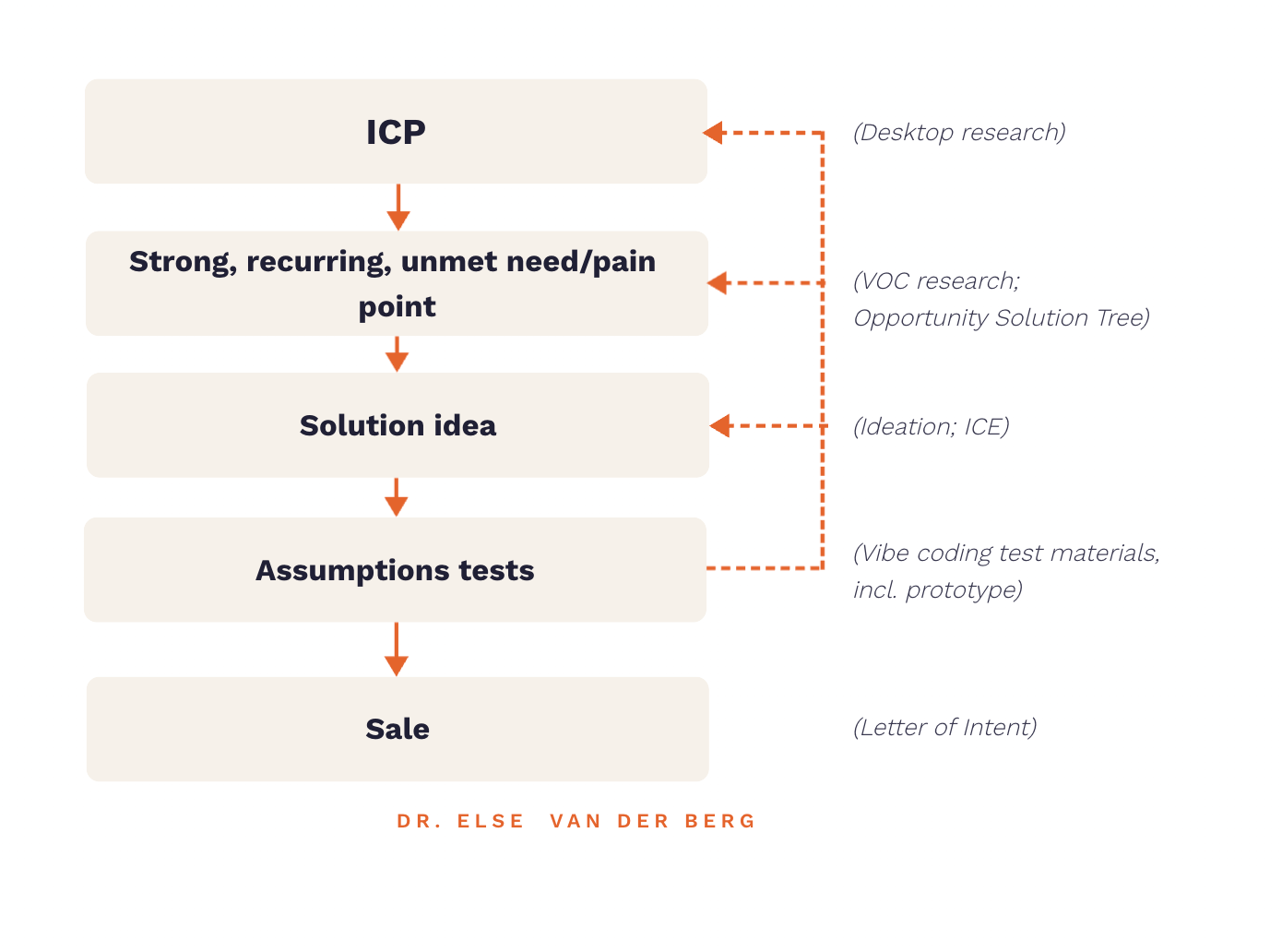Building a Bootstrapped B2B Product with Gen AI (0 to 1)
Follow along as I go from ICP → recurring, unmet need → solution-idea → assumptions → testing → sale for a real B2B product. My own.
People often ask how I go from zero to a validated B2B solution. In this series, I’ll walk you through my process step by step.
We’ll go from identifying an ICP → uncovering a recurring unmet need → ideating a solution → mapping assumptions → testing → getting to a sale of a real B2B product. My B2B product.
I’ll share precisely how I leverage AI to make it possible (tools, models, prompts, best practices, pitfalls - everything I pick up along the way).
But let’s be clear: AI makes it 100x easier, cheaper, and faster to build. But it doesn’t replace judgment. Without that, we’re all building the same mediocre, brittle tools.
As Marty says: the magic happens when Gen AI meets a smart human. So… why shouldn’t that be me?
Goals
Goal: Build a bootstrapped B2B business I can run solo.
Key result: Signed LOI for a paid pilot within 13 weeks.
Approach: Use the best Gen AI tools fit-for-purpose. Get really good at prompting/sparring. Move fast.
Principles
#1: Underserved niche + locksmith model
I’m not chasing billion-dollar markets, and I don’t care about raising VC funding.
I want to serve a specific, niche, ICP with a painful, unsolved problem, and no good alternatives.
Think about how it feels when you get locked out of your house and you need the locksmith to sort you out. They’ll be late, unfriendly, and charge €500,- for the ordeal. But you don’t have any option.
I’m looking for the equivalent of that in the B2B space to replace with a simple software solution.
#2: Market → Product (not the other way around)
There are two ways of building new products: Products in search of a market (‘build it, and they will come’); or markets in search of a product/solution.
Most founders I work with apply a hybrid model. They go from solution idea → broad ICP & pain points → narrow ICP & specific pain points → refined solution idea.
I’m following a strict market first approach. I’m going in without any notions about pain points or solutions. My first step is to find an underserved niche before anything else.
#3: Hair-on-fire problem
Sequoia distinguishes between three product-market fit archetypes:
Hair-on-Fire (“You solve a problem that’s a clear, urgent need for customers. The demand is obvious.”);
Hard fact (“ You take a pain point universally accepted as a hard fact of life …Your customers have resigned themselves to just living with the problem. They’re not urgently engaged with trying to solve it.”);
Future vision (“You enable a new reality through visionary innovation…Customers are not only not trying to solve the problem, they are either oblivious to it or predisposed to think it’s a pipe dream. “)
It’s important to understand that all three archetypes are a valid option, and then make an active choice to pursue one of them. Getting stuck in the middle between archetypes is a fast road to failure.
And I’m just a hair-on-fire kind-of-gal.
#4: Simplicity is Everything
I’m building a focused point solution. Not a feature-stuffed platform. Solve one problem really well.
#5: Founder-led sales (not PLG!)
Since I don’t know the ICP deeply yet, I need 1:1 convos to learn what makes them tick, before even thinking about enabling a self-serve motion.
#6: AI for discovery & testing, not for shipping
AI (today) is great for fast mockups, not production-grade code. (I’m with Stuart Winter-Tear on this one.) (Of course, this doesn’t mean that a developer shouldn’t be assisted by AI when the shipping-time comes. It’s just that I won’t let AI build it ‘solo’)
#7: Sell before you build
Thanks to @Maja Voje, I’m laser-focused on selling the solution before building it. No MVP until someone signs a paid pilot with clear pricing + timelines.
The Steps
Not as linear as they look—expect lots of iteration.
Find underserved ICP (deep research)
VOC research to surface unmet needs (Both manual and with AI)
Refine to a niche in excruciating pain
Prioritize problems (Opportunity Solution Tree)
Ideate + pick the best solution to #1 opportunity
Map assumptions
Test with lightweight tests (vibe code test materials)
Build prototype for winning idea (vibe code)
Sales outreach → get signed LOI for a paid pilot
Let’s go.






Keep us posted!
curious how you plan to do the research part to discover those "hair on fire" problems.